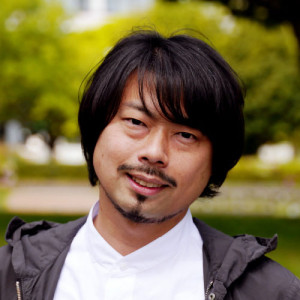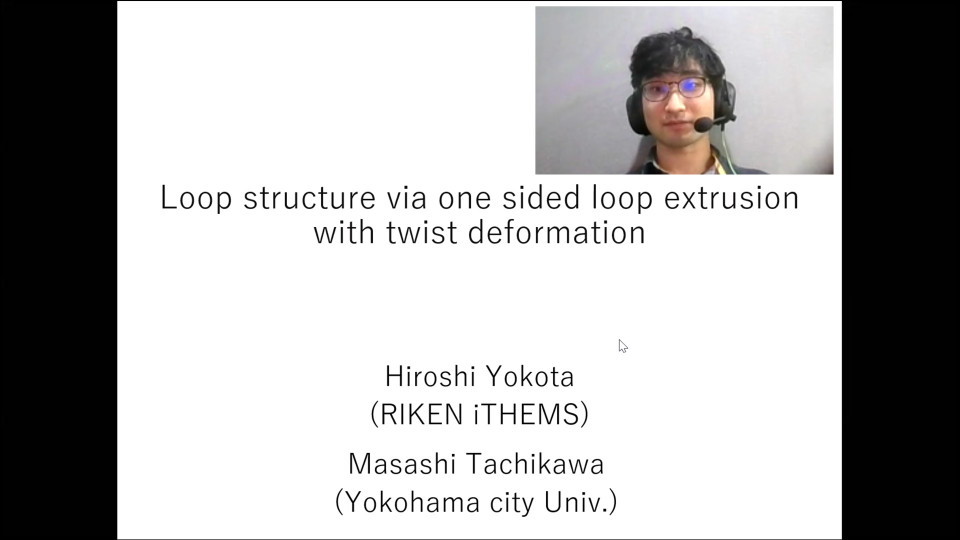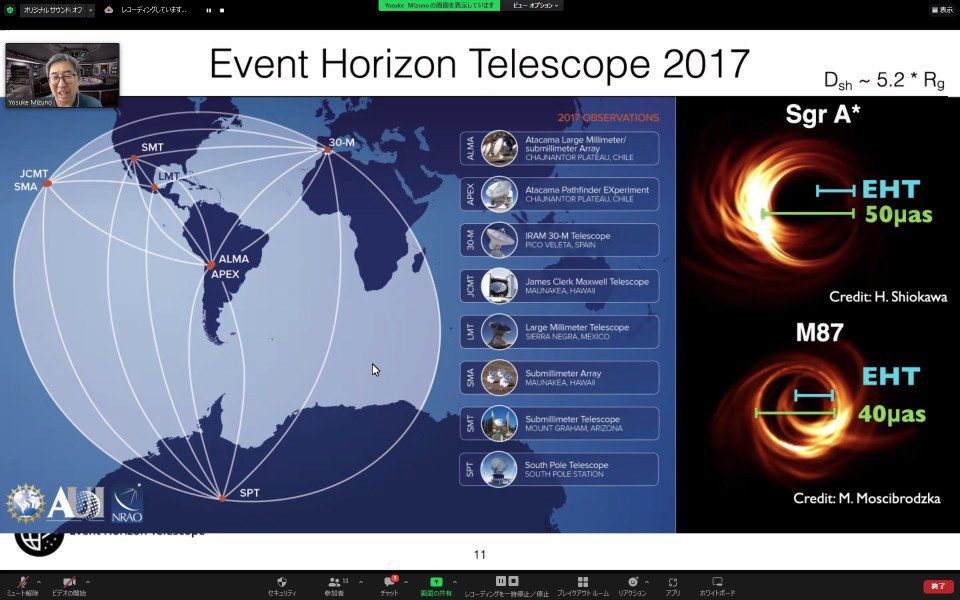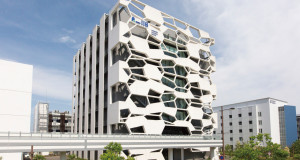Volume 214
Back to Newsletter List
Press Release
Is it possible to shorten isolation of people infected with new coronavirus? -Development of a simulator to verify the timing of quarantine termination
2022-08-29
Professor Shingo Iwami (Graduate School of Science, Nagoya University / Visiting Scientist, iTHEMS), in collaboration with Assistant Professor Keisuke Ejima (Indiana University, USA), has developed a new simulator (computer simulation) to verify when to end isolation of persons infected with a novel coronavirus (COVID-19) through antigen testing.
This will allow us to propose a flexible and safe isolation strategy that can terminate isolation of COVID-19-infected patients as early as possible with negative results of a predetermined number of antigen tests.
Isolation of infected patients is an important means of preventing the spread of infection. While prolonged isolation reduces the risk of secondary infection, it also places various burdens on the person being isolated and the society that supports them.
Using the simulator they have developed, the research group has successfully calculated "the risk of (prematurely) terminating isolation of infectious patients" and "the duration of unnecessary isolation of patients who are no longer infectious (the burden associated with isolation)." As a result, we are now able to propose an appropriate isolation strategy that takes into account individual differences and uses antigen testing to simultaneously reduce risk and burden. As we enter the era of with-colonization, in which social activities are resumed and maintained while infection prevention measures are thoroughly implemented, the successful use of antigen testing will allow for the safe implementation of educational and social activities.
In contrast to the current situation where different isolation standards based on clinical and epidemiological data and empirical rules are adopted in different countries, this study is expected to contribute to the establishment of flexible isolation guidelines based on mathematical models, which are required not only in Japan but also worldwide.
For more details, please visit the Nagoya University research results dissemination site from the related link.
Reference
- Yong Dam Jeong, Keisuke Ejima, Kwang Su Kim, Woo Joohyeon, Shoya Iwanami, Yasuhisa Fujita, Il Hyo Jung, Kazuyuki Aihara, Kenji Shibuya, Shingo Iwami, Ana I. Bento and Marco Ajelli, Designing isolation guidelines for COVID-19 patients with rapid antigen tests, Nature Communications 13, 4910 (2022), doi: 10.1038/s41467-022-32663-9
Hot Topic
Featured articles on iTHEMS published in "Sugaku Tsushin"
2022-08-30
iTHEMS was featured in the August volume of "Sugaku Tsushin" (Japanese magazine published by The Mathematical Society of Japan). Our colleagues, Tetsuo Hatsuda, Ade Irma Suriajaya, Yosuke Kubota, Hiroyasu Miyazaki and Yukimi Goto, have written essays on iTHEMS in the volume. Let's see mathematicians' thoughts on the iTHEMS atmosphere.
Seminar Report
iTHEMS Biology Seminar by Dr. Hiroshi Yokota on September 1, 2022
2022-09-02
In the iTHEMS biology seminar on September 1st, I, Hiroshi Yokota, talked about a theoretical model of chromosome condensation based on Langevin simulation. In this model, the twist and the writhe structures on biopolymer is quantified in a computational manner. In this seminar, I enjoyed the discussion with audiences on the computational method and the definition of the twist and the writhe. Thank you so much!
Reported by Hiroshi Yokota
Loop structure via one sided loop extrusion with twist deformation
September 1 (Thu) 16:00 - 17:00, 2022
Seminar Report
ABBL-iTHEMS Joint Astro Seminar by Dr. Yosuke Mizuno on August 26, 2022
2022-08-26
Dr. Yosuke Mizuno presented the first Event Horizon Telescope (EHT) observations of Sagittarius A* (Sgr A*), the Galactic center source associated with a supermassive black hole. These observations were conducted in 2017 using a global interferometric array of eight telescopes operating at a wavelength 1.3 mm. A variety of imaging and modeling analyses all support an image that is dominated by a bright, thick ring with a diameter of ~50 micro-arcsecond. Using a large suite of numerical simulations, The EHT group demonstrated that the EHT images of Sgr A* are consistent with the expected appearance of a Kerr black hole with mass ∼4 million solar mass, which is inferred to exist at this location based on previous infrared observations of individual stellar orbits, as well as maser proper-motion studies. Their model comparisons disfavor scenarios where the black hole is viewed at high inclination (i > 50 deg), as well as non-spinning black holes and those with retrograde accretion disks. Our results provide direct evidence for the presence of a supermassive black hole at the center of the Milky Way. In the seminar, Dr. Yosuke Mizuno focused on more theoretical interpretation and model comparison to understand the accretion flow properties nearby Sgr A*.
Reported by Shigehiro Nagataki
Testing Astrophysical Models from the Shadow of the Galactic Center Black Hole
August 26 (Fri) 14:00 - 15:00, 2022
Upcoming Events
Seminar
iTHEMS Biology Seminar
Hessian Geometric Structure of Equilibrium and Nonequilibrium Chemical Reaction Newtworks
September 8 (Thu) 16:00 - 17:00, 2022
Tetsuya Kobayashi (Associate Professor, Institute of Industrial Science, The University of Tokyo)
Cells are the basic units of all living things, and their functions are realized by circuits and networks of chemical reactions. Thus, understanding the mechanism how various cellular functions are implemented by chemical reaction networks (CRN) is the central challenge in biophysics and quantitive biology. Among various aspects of CRN, its thermodynamic property is particularly important because most of biological functions are energy-consuming nonequilibrium phenomena. However, even though the equilibrium chemical thermodynamics and kinetics of chemical reactions were founded more than one century ago, the nonequilibrium theory of CRN is still immature. One reason is the nonlinearity in the constitutive equation between chemical force and flux, which prevents us from associating the tangent and cotangent spaces of the dynamics by the usual inner product structure. In this work, we show that the nonlinear relation between chemical force and flux can be captured by Legendre transformation and the geometric aspects of CRN dynamics can be characterized by Hessian geometry. Hessian geometry is the geometry generated by Legendre dual pairs of convex functions and is the basis of dually flat structure of information geometry and also equilibrium thermodynamics. Thus, we have dually flat structures in CRN dynamics, one on the state-potential space where equilibrium and energetic aspect is formulated (1,2), and the other on the force-flux space where nonequilibrium and kinetics aspect is characterized(3). Two of them are consistently connected by topological property of the underlying hypergraph structure of CRN. We discuss potential applications of this structure not only for CRN but also for other phenomena and problems(4,5).
References
- Yuki Sughiyama, Dimitri Loutchko, Atsushi Kamimura, and Tetsuya J. Kobayashi, Hessian geometric structure of chemical thermodynamic systems with stoichiometric constraints, Phys. Rev. Research 4, 033065 (2022), doi: 10.1103/PhysRevResearch.4.033065
- Tetsuya J. Kobayashi, Dimitri Loutchko, Atsushi Kamimura, and Yuki Sughiyama, Kinetic derivation of the Hessian geometric structure in chemical reaction networks, Phys. Rev. Research 4, 033066 (2022), doi: 10.1103/PhysRevResearch.4.033066
- Tetsuya J. Kobayashi, Dimitri Loutchko, Atsushi Kamimura, Yuki Sughiyama, Geometry of Nonequilibrium Chemical Reaction Networks and Generalized Entropy Production Decompositions, arXiv: 2206.00863
- Yuki Sughiyama, Atsushi Kamimura, Dimitri Loutchko, Tetsuya J. Kobayashi, Chemical Thermodynamics for Growing Systems, arXiv: 2201.09417
- Dimitri Loutchko, Yuki Sughiyama, Tetsuya J. Kobayashi, Riemannian Geometry of Optimal Driving and Thermodynamic Length and its Application to Chemical Reaction Networks, arXiv: 2205.03829
Venue: via Zoom
Event Official Language: English
Workshop
DM3 - Deep insights and Multiple strategies for Deciphering the Mystery of Dark Matter
September 15 (Thu) - 17 (Sat) 2022
Venue: SUURI-COOL (Kobe), Room S704-S705, Integrated Innovation Building (IIB), Kobe Campus, RIKEN / via Zoom
Event Official Language: English
Paper of the Week
Week 1, September 2022
2022-09-01
Title: Impact of Neutrino Cooling on Type-I X-ray Bursts and X-ray Superbursts
Author: Akira Dohi, Nobuya Nishimura, Hajime Sotani, Tsuneo Noda, Helei Liu, Shigehiro Nagataki, Masa-aki Hashimoto
arXiv: http://arxiv.org/abs/2208.14622v1
Title: Functional Renormalization Group Approach to Circuit Quantum Electrodynamics
Author: Takeru Yokota, Kanta Masuki, Yuto Ashida
arXiv: http://arxiv.org/abs/2208.14107v1
Title: Binary-coupling sparse SYK: an improved model of quantum chaos and holography
Author: Masaki Tezuka, Onur Oktay, Enrico Rinaldi, Masanori Hanada, Franco Nori
arXiv: http://arxiv.org/abs/2208.12098v1
If you would like to cancel your subscription or change your email address,
please let us know via our contact form.
Copyright © iTHEMS, RIKEN. All rights reserved.






